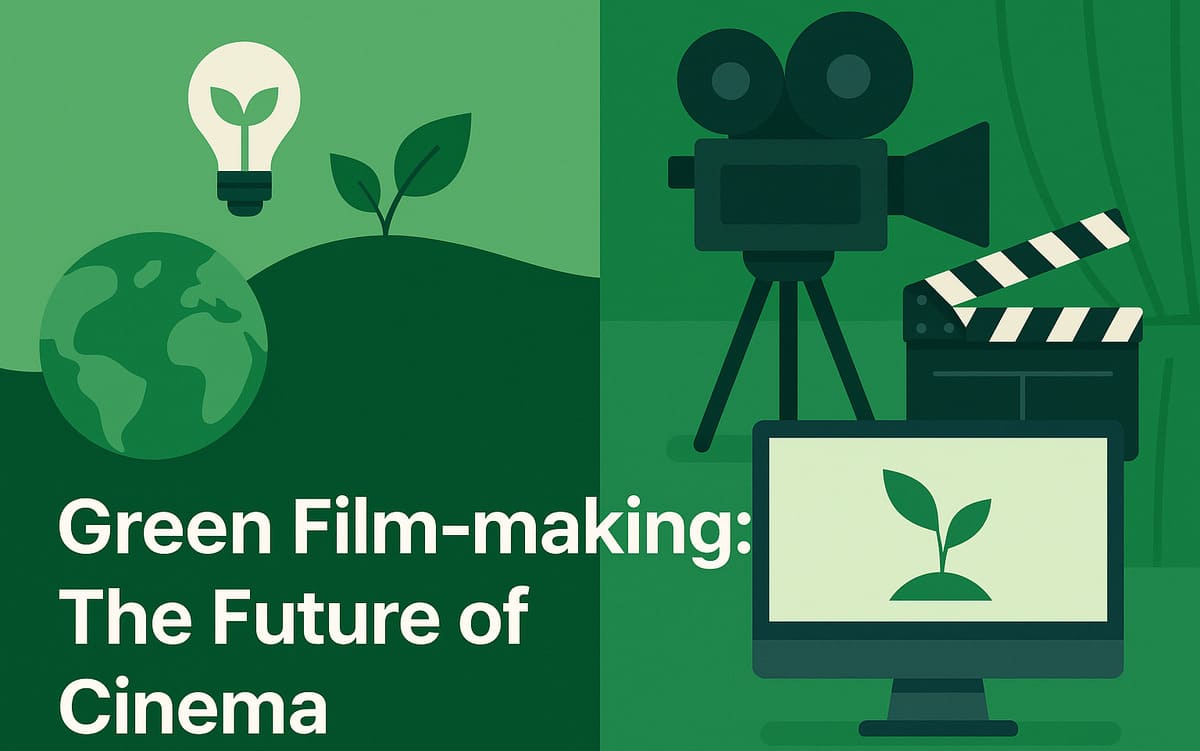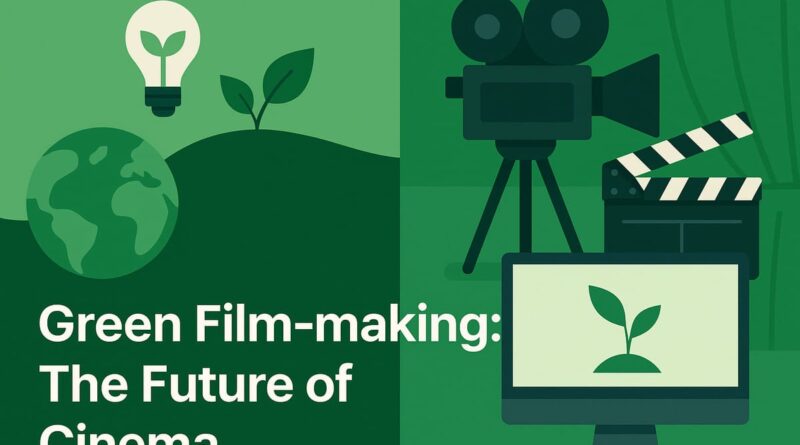Why Green Film-making Is the Future of Cinema: By Imrana

Why Green Film-making Is the Future of Cinema: By Imrana
In this article, Imrana explains the imperative of green film-making for movie maestros as well as aspiring aficionados.
By Imrana

Film-making has always been full of magic. From big-budget action films to small indie stories, movies take us into new worlds. But behind the scenes, the film industry uses a lot of energy, time, and money — and it also harms the environment more than we think.
Traditional film-making involves cameras, lights, huge sets, crew travel, and transport. All of this adds up to big energy use. In simple words: making a film often means burning fuel, using lots of electricity, and spending millions of dollars. It’s not very eco-friendly.
That’s why green film-making is becoming more important.
What Is Green Film-making?
Green film-making means making movies in a way that saves energy and reduces harm to the environment. It’s about using fewer physical resources — like trucks, lights, or massive crews — and using technology instead.
For example, instead of building a big set in a faraway location, filmmakers can now use green screens or blue screens and add the background digitally. Many big studios are now using virtual production tools to create worlds on a computer instead of flying actors and crew across the globe.
Why Traditional Film-making Is a Problem
A normal film shoot uses:
Cameras (lots of them)
Lights (very bright, very hot, and power-hungry)
Transport (trucks, vans, even planes to move cast, crew, and equipment)
Electricity (for the entire set)
All of these things use energy — and the more energy we use, the more carbon we release into the air. This is bad for the environment and adds to climate change.
Also, all this setup can be very costly. Some big movies cost $350 to $500 million or even $1 billion, according to industry reports. That’s a huge amount of money for something that may also be hurting our planet.
How Green Film-making Helps
With green film-making, we can:
Save energy
Reduce travel
Use digital sets instead of building real ones
Cut down on waste
Spend less money
Virtual tools like Sora by OpenAI or Google VEO can now generate scenes, settings, and even actions using AI. That means you don’t always need to shoot in real places — the computer can help you create them. It’s kind of like shooting a film in a video game world.
This doesn’t just help the Earth — it helps young creators like me. We can make short films and stories using just a laptop, camera, and green screen. It opens the door for more people to join the world of film-making, not just those with big budgets.
Real Numbers: What Are We Talking About?
Traditional film-making can cost $350–$500 million, sometimes even $1 billion
Green production might only use 200 MP cameras and need 1 billion zoom images, but all digitally
This reduces the need for real-world shooting and energy use
These numbers show how green methods can save costs and energy while still allowing high-quality storytelling.
Are There Any Drawbacks?
Of course, green film-making isn’t perfect.
Some directors still prefer real locations. The feel of natural sunlight, the real sounds, and the spontaneous energy of shooting outside are hard to copy with a computer. Green screens and digital effects may not work for every film.
Also, not everyone has access to advanced virtual tools. Training and technology still cost money. So, in some cases, going fully digital may not be easy right away.
Why Young People Should Care
As a student, I care about the environment — and I also care about creativity. Green film-making allows us to do both.
We don’t need to choose between telling great stories and protecting the planet. We can do both by learning new tools and working smarter.
Plus, green film-making is exciting. It allows us to experiment, use our imagination, and make big ideas real — all without harming the Earth.
The Big Picture
The film industry is changing. More people are thinking about the future, not just of cinema, but of our climate.
Green film-making is not just a trend — it’s a smart step forward. It helps save money, reduces waste, and gives more people access to the magic of movies. While traditional film-making will always have its place, the green approach is clearly growing fast.
As students and young storytellers, we should embrace this change. The camera is still rolling — but this time, let’s make sure the Earth stays in the frame.
This consultative article has been written exclusively for RMN News by Imrana, who is a student specializing in multiple domains such as business, trade, education, technology, entertainment, and politics. She also produces Imrana’s Insight podcast program on diverse topics.
👉 You can click here to know more about Imrana’s editorial and humanitarian work.
More Articles by Imrana
[ Trump’s Tariff Pause: A Temporary Relief or a Global Trade Warning? ]
[ Small and Medium Businesses: The Real Heroes of the Economy ]
[ Unemployment in 2025: My Thoughts on a Big Problem ]
[ Imrana’s Insight Podcast Explains Small Business Development Strategy ]
💛 Support Independent Journalism
If you find RMN News useful, please consider supporting us.




